The Economics and Statistics Division maintains archives of previous publications for accountability purposes, but makes no updates to keep these documents current with the latest data revisions from Statistics Canada. As a result, information in older documents may not be accurate. Please exercise caution when referring to older documents. For the latest information and historical data, please contact the individual listed to the right.
<--- Return to Archive
For additional information relating to this article, please contact:
February 16, 2024WHOLESALE TRADE, DECEMBER AND ANNUAL 2023 NOTE
Starting with the March 2023 reference month, petroleum products data are available within Statistics Canada's data on wholesale trade. This distorts year-over-year and year-to-date comparisons as well as the national inventory to sales ratio. The effect causes data for oil-producing regions to increase more rapidly than in other provinces.
Monthly (seasonally adjusted, December 2023 vs November 2023)
Nova Scotia wholesale trade declined 5.3% to $1.25 billion. National wholesale trade decreased 4.1% to $117.6 billion in December. All provinces reported a decline over the previous month (except Ontario which was virtually unchanged), with the fastest decline in Newfoundland and Labrador.
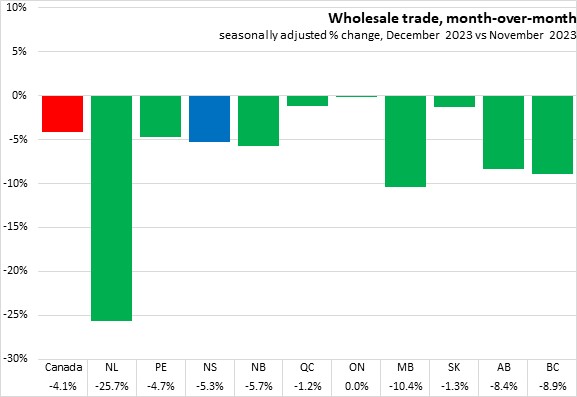
Year-over-year (seasonally adjusted, December 2023 vs December 2022)
Nova Scotia wholesale trade increased 19.7%. Canada's wholesale trade increased 43.4% with the recent inclusion of petroleum, oil seeds and grains in the data series. All provinces reported year over year increases in wholesale trade. Alberta, Manitoba, Newfoundland and Labrador and New Brunswick reported the largest gains. The gain in Prince Edward Island was the slowest.
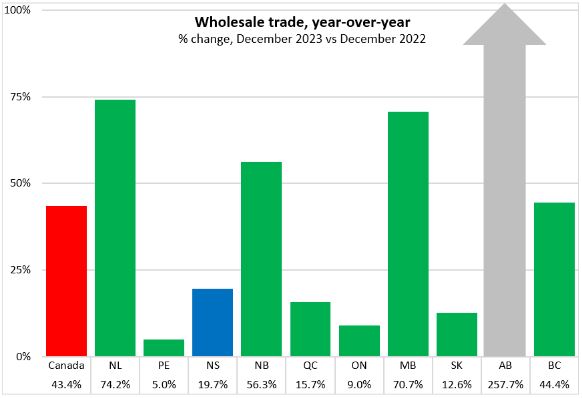
Annual (2023 vs 2022)
Nova Scotia wholesale trade increased 11.0% in 2023 - the second slowest gain among provinces, ahead of Prince Edward Island. Canada's wholesale trade increased 46.5% (including the recent addition of petroleum, oil seeds and grains). All provinces reported annual increases. Alberta, Manitoba and Newfoundland and Labrador reported the largest gains in wholesale trade over 2022.
Nova Scotia's wholesale trade has increased every year since 2015, with the exception of the decline due to the COVID-19 pandemic in 2020. After 2020, there has been a significant increase which can partially be attributed to rising inflation.
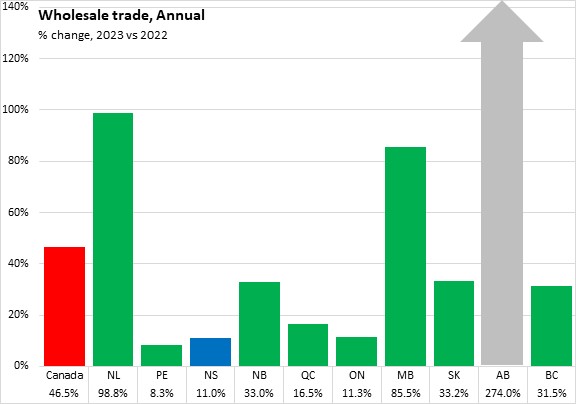
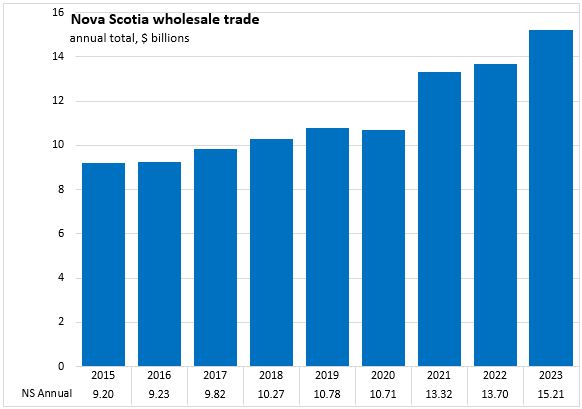
The largest dollar contributions to Nova Scotia's wholesale trade came from food and beverage wholesalers (though this category declined in 2023) as well as building materials wholesalers (unchanged in 2023). Note that farm products as well as personal/household goods are included in total, but category-level data are suppressed.
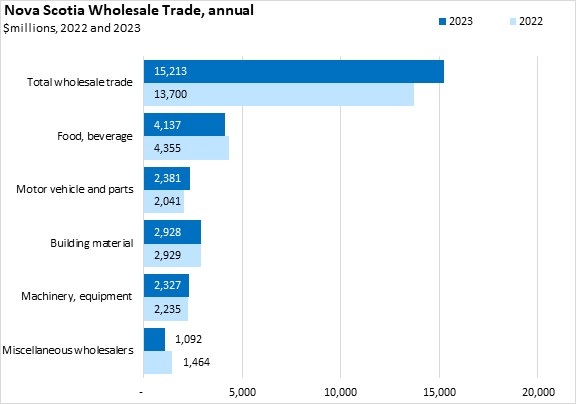
The largest percentage gains in Nova Scotia's to wholesale trade were among motor vehicle and parts wholesalers.
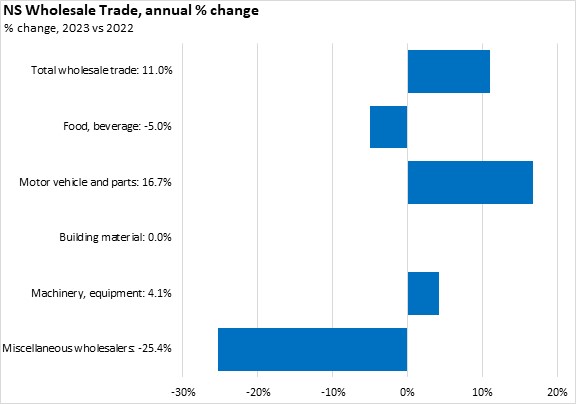
TRENDS
Over the past year, there has been high volatility in Nova Scotia's wholesale trade with several large declines and recoveries. Canada reported a very large increase as the data series was changed to include petroleum products.
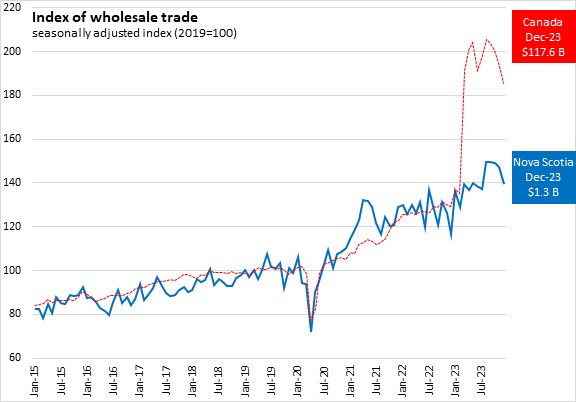
After the break in the data series with the inclusion of petroleum products in March 2023, wholesale inventories trended down as a share of sales, but there has been a recovery in recent months, rising to 1.22 in December.
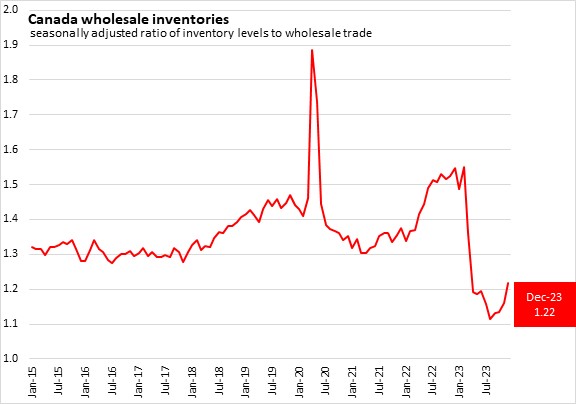
Source: Statistics Canada. Table 20-10-0074-01 Wholesale trade, sales (x 1,000); Table 20-10-0076-01 Wholesale trade, inventories (x 1,000)
<--- Return to Archive